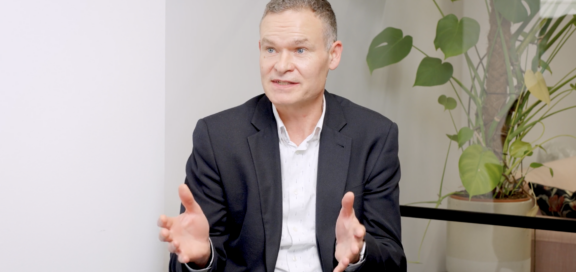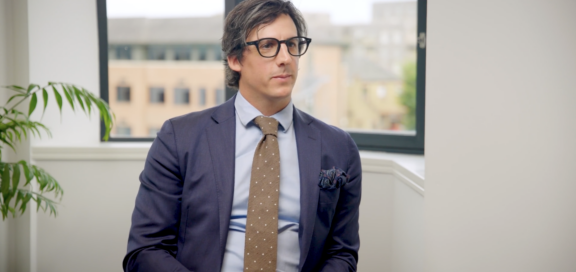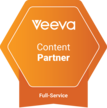
Podcast: The Impact of Technology on Pharmaceutical Communications
About Podcast: The Impact of Technology on Pharmaceutical Communications
Matthew Dickinson, Julie Hardy, and Rob Wilson discuss how digital transformation has reshaped communications in the pharmaceutical industry.
Over the past decade, there has been a shift from traditional formats like sales aids to dynamic content such as podcasts, videos, and interactive digital platforms. While new tools and technologies like AI and virtual reality enhance workflows and creativity, the team emphasises that their relevance to project goals is crucial.
Transcript
00:00:00 – 00:00:21
Matthew: Hi there. My name is Matthew Dickinson. I’m the Managing Director of Dice Communications, and today I’m here to talk with Rob and Julie about digital transformation and its impact on the pharmaceutical industry, particularly from a communications perspective. Good afternoon! Would you like to introduce yourselves?
Julie: I’m Julie Hardy, and I’m an Account Director here at Dice.
Rob: And I’m Rob Wilson, the Creative Director at Dice.
00:00:21 – 00:01:21
Matthew: Great! Over the last five years, we’ve seen a significant leap forward in the work we do for our clients. Ten years ago, it was all about sales aids, leaflets, and maybe a website. Now, companies are rightly taking ownership of their web platforms, ensuring consistency in look and feel.
From an agency perspective, the types of deliverables and the scope of our work have evolved immensely. However, it’s crucial we don’t simply chase the latest tools or trends without assessing their relevance. So, let me ask: Rob, as Creative Director, how has this transformation impacted the breadth of work we do?
00:01:21 – 00:02:25
Rob: It’s changed massively, especially in the last ten years. There’s a temptation to use the latest tools just because they’re available. But we have to ensure that whatever we do aligns with the project’s goals. It’s about ensuring relevance.
Matthew: Julie, from your perspective, how have client briefs changed over the years?
Julie: Dramatically. It’s more engaging now because we’re incorporating newer formats like podcasts and videos. Short, engaging content grabs attention quickly, especially given how platforms like Instagram and Facebook have shaped consumer expectations. Clients want high-quality content that’s concise but still in-depth and relevant.
00:02:25 – 00:03:56
Matthew: That’s an excellent point. Digital transformation has sped up how we work, but certain fundamentals remain the same. Regardless of the tools available, the quality of the work—its production values, the strength of the ideas, and the relevance to the audience—remains paramount.
For example, we’ve worked with virtual reality and AI, but only when they make sense for the project. Tools should enhance the process, not dictate it. Rob, have you seen significant changes in the tools available to your team?
Rob: Absolutely. New tools enable faster, more creative workflows, but they don’t shortcut the need for solid ideas and key messages. Tools support the process; they don’t replace it.
00:03:56 – 00:07:01
Matthew: Julie, when clients request new approaches, how do you balance their enthusiasm for shiny new tools with what’s actually beneficial?
Julie: It’s about questioning whether it’s the right approach for the project. As an agency, we’re at the cutting edge, especially in the pharmaceutical industry. But compared to sectors like tech, pharma is slower to adopt new methods due to medical regulations.
Matthew: That’s true. The sentiment is shifting, though. There’s more emphasis on high-quality, iterative work, which is encouraging.
00:07:01 – 00:10:39
Matthew: Let’s talk about AI in medical writing. Personally, I think AI has increased the value of great medical writers, not diminished it. AI can help with tasks like data analysis or transcript reviews, but stitching insights together into a cohesive brand platform requires expertise and human understanding.
Julie: I agree. AI lacks the ability to apply tone of voice or context, which are crucial in communications. Our writers bring those skills to the table.
00:10:39 – 00:15:07
Matthew: As an agency, we’ve always embraced transformation. The tools and processes we use evolve, but the focus on creative ideas and strategic thinking remains constant. For example, clients’ expectations around timelines are changing—they want quicker turnarounds without sacrificing quality.
Rob: Definitely. The mobility of today’s technology has transformed how we work. I can jot down ideas on my laptop, even during a photoshoot. That flexibility is invaluable.
Julie: Collaboration is another area of change. In-person events and meetings are making a comeback, and they’re speeding up decision-making and creative processes.
00:15:07 – 00:20:25
Matthew: Looking ahead, I think the future of our industry lies in focusing on what really matters—great ideas, impactful strategies—while automating or streamlining repetitive tasks. This allows us to spend more time on creative thinking and less on admin-heavy processes.
Rob: Agreed. Tools should help us communicate ideas to clients more effectively and efficiently.
00:20:25 – 00:21:05
Matthew: To summarise, digital transformation is helping us work faster and more efficiently. But ultimately, success comes from maintaining the quality and relevance of our ideas. The tools we use should be additive, not just a novelty. Thank you both for an engaging discussion. The future looks incredibly exciting for our industry!
Resources
- Veeva Systems
- PhRMA – Pharmaceutical Research and Manufacturers of America
- ABPI – Association of the British Pharmaceutical Industry
- Global Genes (Patient Organisation)
- NORD (Patient Organisation)





